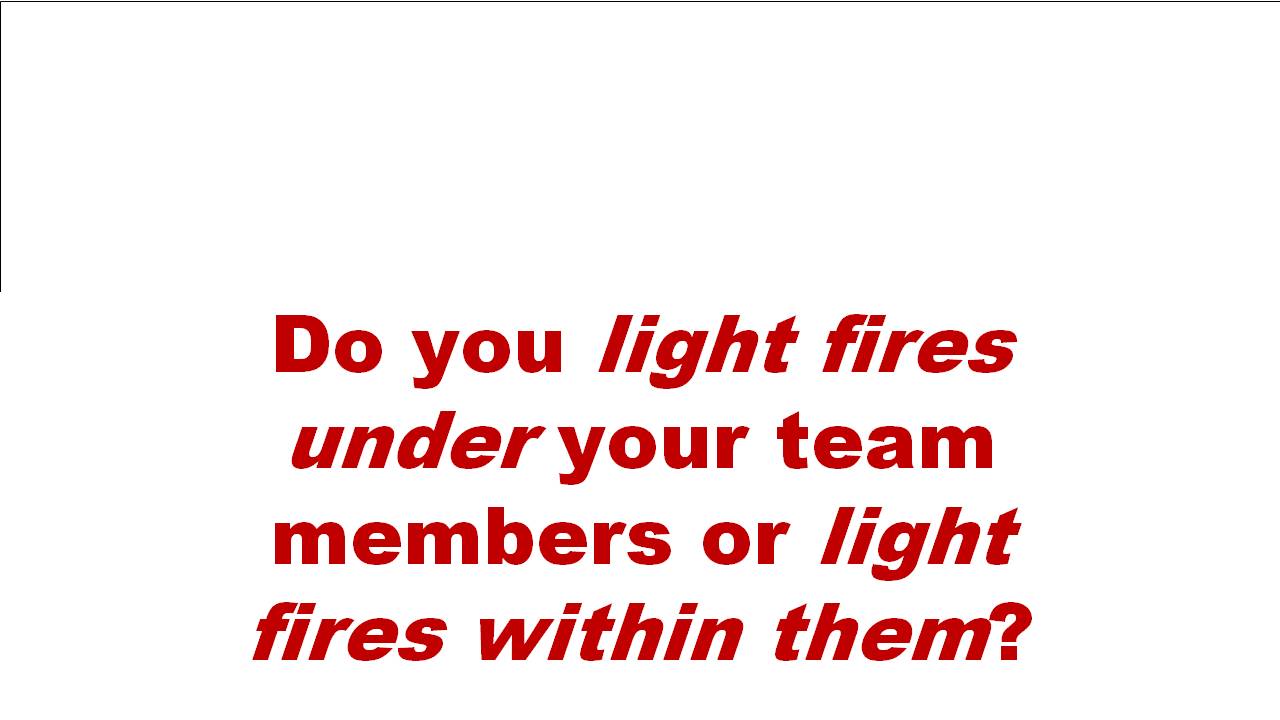by Peter A. Arthur-Smith
“But what about the team’s morale and likely performance going forward?

Melissa felt pretty good that her team’s results were on target for this quarter, although she worried about whether it could sustain that performance. Her team members – or teamers – were generally doing what had to be done, meeting their weekly numbers, keeping their heads down, and acting upon daily requests. Even so, she wasn’t confident that her team could keep up with growing company demands. She knew that a fairly robust economy was helping her team’s results, but felt concerned about what might happen if that were to change.
By sheer luck she read an article about enlightened leadership (EL) and its approach toward building morale and sustaining team performance. It mentioned the acronym PEACAM and its related six factors that build intrinsic people motivation and greatly influence morale and performance. That’s where P=compelling Purpose and E=sense of personal Equality. They’re immediately followed by A=feeling of regular Achievement/ Accomplishment and C=comfort with team Camaraderie. Finally, there is the other A=realization of Autonomy/empowerment and M=confidence gained from role Mastery. Since these factors light fires within people, they will readily sustain team effort over time. Such thinking set off light bulbs in Melissa’s mind as the way to go, since when properly applied her people would then WANT TO participate on a regular basis.
Up until now, she had been leaning on the conventional management axiom of CIGFAM; where C=competition, I=incentives, G=goals, F=fear, A=accountability, and M=measurement. That interesting article pointed out how these traditional motivators are invariably extrinsic factors, because they are brought to bear by applying external forces. Once you remove them, the push factors dissipate and so does the desire to perform, because it’s like lighting fires under people. Although CIGFAM has its place, especially in crisis or threatening situations, they tend to induce a work environment where people feel compelled or HAVE TO participate. That can wear thin over time.
Coming back to PEACAM once more, she decided to hold brown-bag lunches at least once per month, based upon novel food ideas by her team, where they could chat about what was going well and where things could be made even better. Run for about an hour, they would also include an in-team discovery session where a rotating pair from her team of six would step forward to lead a Socratic discussion on prior agreed team performance topics. These sessions would likely include priority management, customer (internal or external) service, intra-team cooperation, inter-team cooperation, product knowledge, and so on. Session lead pairs would devise Socratic questions that would encourage colleagues to offer solutions rather than expecting answers. That way it would be far more educational and its know-how stick to a far greater degree.
Beyond this approach, Melissa resolved that where team members were not playing their full part, she would spend extra time with them utilizing a sandwich approach; i.e. point out a couple of positive attributes, discuss an area for improvement, and finish on another positive attribute or two. Where that doesn’t work, since it so often does, she would opt, after three remedial efforts, to discuss the possibility of that teamer moving on elsewhere. That way other teamers wouldn’t feel the burden of an underperforming colleague.
It took Melissa a while to perfect her PEACAM approach. Now her team not only surpasses its desired objectives every quarter, but she has every confidence that it will continue to do so. In fact her team is now held up as a positive example for other teams to follow. In other words, getting people to perform is not all about money, financial incentives and statistics; it’s about having the right people talent, understanding their intrinsic motivators, educating them, and providing positive leadership.
For her part, Melissa’s not so stressed out; she shares the load among her team – which they invariably thrive on by being treated as mature colleagues – and doesn’t feel burdened by underperforming teamers. Her teamers will either step-up to what’s agreed among them or Melissa will encourage any one member, after due coaching, to find a more suitable role elsewhere. Such an understanding induces a sense of team commitment among the majority of her teamers where everyone is willing to play their full part. By constantly challenging her teamers to be involved in their education and laying out the road before them, they are fully involved in giving of their best…all due to enlightened leadership (EL). Conventional management (CM) is still relevant to sustain key systems within and around them, ensure the numbers are there, and eliminate waste, although it’s not the be all and end all.
